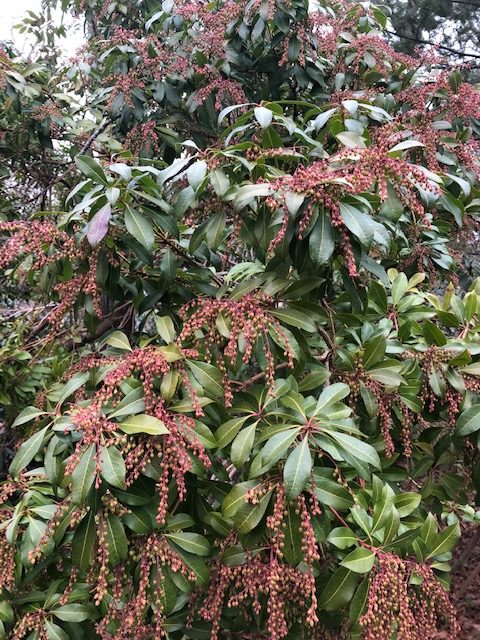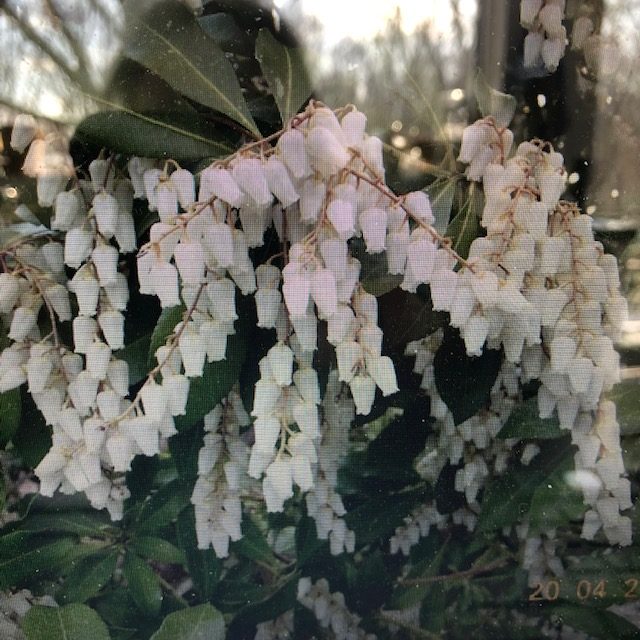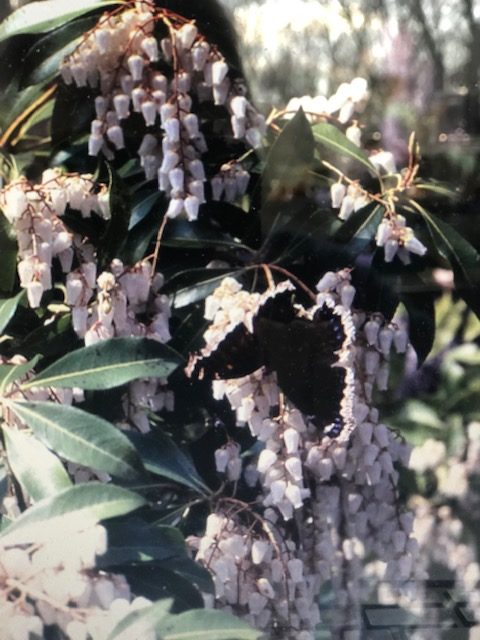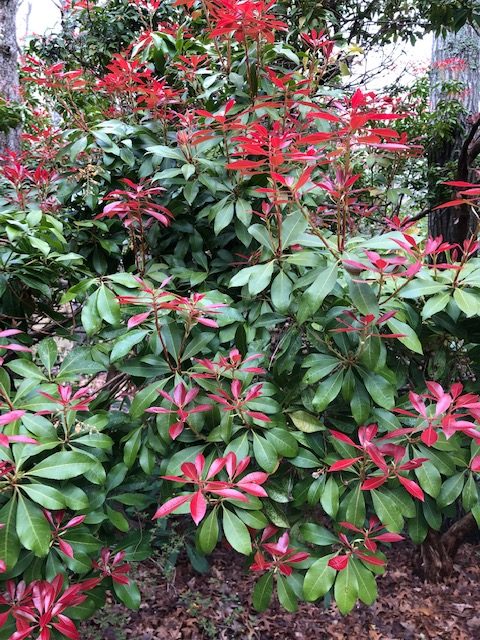“Gardening is eleven months of hard work and one month of disappointment.” Elizabeth Lawrence.
While Lawrence spoke in jest, many of us have experienced real moments of despair when our dreams of garden magic turn into disappointing nightmares. All the more reason to fill our gardens with successful, time-tested, timeless plants, like the non-stop performer below:
Pieris japonica ‘Mountain Fire’ (Z 4-7) has graced my garden for more than thirty years and never disappoints: The tall, handsome, evergreen shrub bedazzles in Winter, Spring, Summer and Fall. In late Summer, the Pieris produces an abundance of flower buds that turn a show-stopping pink in Winter; in early Spring they open to pendulous clusters of fragrant white flowers, providing nectar for the early Spring pollinator, the Mourning Cloak Butterfly. Photos below.
(Note: The Mourning Cloak is one of North America’s longest lived butterflies. Unlike others, it hibernates over Winter — hopefully in our gardens — and emerges in Spring to mate and deposit eggs, ensuring a new generation before it dies. Not surprising that in the Spring photo above, the butterfly looks a bit ragged. The beautiful lively youngsters are unwilling to stop and pose for me.)
But I digress. Back to P.j. ‘Mountain Fire’:
When the Pieris flowers fade in May, the shrub’s vibrant fire-engine-red new growth emerges and rightfully demands star-billing and attention. Photo below. The new red leaves will turn a deep bronze before they finally turn green.
P.j. ‘Mountain Fire’ is deer-resistant and disease-resistant. In my organic garden, for more than three decades it has been deer-proof and disease/pest-free. (My Pieris thrives in shade. Be aware, if grown in sun it may have a serious problem with lace bug.) Provide well-drained, organically rich, acid soil.



